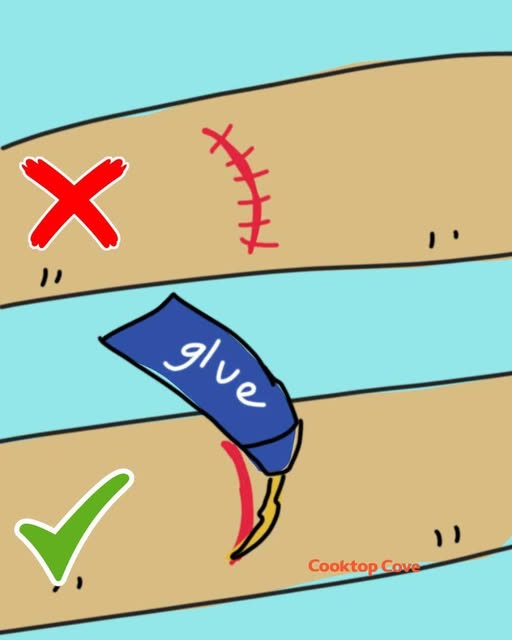Use ice to treat a bruise
Treating a bruise effectively can help reduce pain, minimize swelling, and speed up the healing process. If you sustain a bruise, begin by applying a cold compress or ice pack to the affected area as soon as possible. Use a towel or cloth as a barrier to avoid direct contact with the skin, and apply the cold compress for about 10 to 20 minutes at a time.
The cold helps to constrict blood vessels, reducing inflammation and pain. After the initial cold treatment, elevate the bruised area above the level of the heart to decrease blood flow and minimize swelling.
Avoid activities that may further strain the injured area, and consider using an elastic bandage to provide gentle compression and support. If the bruise is accompanied by severe pain, limited mobility, or other concerning symptoms, it’s important to seek medical attention to rule out a more serious injury.
Use skin glue to heal wounds
When you’re in the wilderness and sustain a cut or wound, it’s important to act quickly to prevent infection and promote healing. One effective way to close a wound is by using skin glue, also known as surgical glue or cyanoacrylate adhesive.
Skin glue is a medical adhesive that is used to seal wounds and can provide a waterproof barrier to protect the injury. To use skin glue, first clean the wound thoroughly with clean water and antiseptic. Next, apply the skin glue directly to the edges of the wound, pinching them together as you do so.
The glue will quickly bond the skin together, providing a protective seal. Keep in mind that skin glue is best for small to medium-sized cuts and should not be used for deep or gaping wounds.
How to treat poisoning
Treating poisoning effectively requires prompt action and an understanding of the type of poison involved. If you or someone else is experiencing symptoms of poisoning, such as difficulty breathing, dizziness, vomiting, or altered mental status, seek emergency medical help immediately.
If possible, try to identify the source and nature of the poison, as this information can be crucial for medical professionals. Do not induce vomiting unless explicitly instructed to do so by a healthcare provider or poison control center, as this can worsen the situation for certain types of poisoning. If the poisoning is due to contact with a toxic substance on the skin or eyes, rinse the affected area thoroughly with clean water for at least 15 minutes.
If the poison has been inhaled, move to fresh air as quickly as possible. Keep the affected individual calm and reassured while awaiting medical assistance. If you have access to a phone, you can also contact a poison control center for guidance on further steps to take
Treating a wound effectively
In a survival situation, knowing how to treat a wound properly is essential to prevent infection and promote healing. Here are the key steps for effective wound treatment:
Step 1: Clean the Wound
Start by cleaning the wound with clean water to remove dirt, debris, and bacteria. If available, use mild soap or an antiseptic solution to further cleanse the area. Avoid using harsh substances like hydrogen peroxide or alcohol, as they can damage the tissue and delay healing.
Step 2: Control Bleeding
If the wound is bleeding, apply direct pressure using a clean cloth or bandage. Elevating the injured area above the heart can also help reduce bleeding. If bleeding is severe and doesn’t stop after several minutes of pressure, a tourniquet may be necessary to control the bleeding.
However, a tourniquet should only be used as a last resort and should be loosened gradually once bleeding is controlled.
Step 3: Protect the Wound
Once the wound is clean and bleeding is controlled, cover it with a sterile dressing or bandage to protect it from dirt and infection. If the wound is deep or large, consider using butterfly bandages or steri-strips to close the edges of the wound together. As mentioned earlier, skin glue can also be used to seal small to medium-sized cuts.
Step 4: Monitor for Infection
Keep an eye on the wound for signs of infection, such as redness, swelling, increased pain, pus, or a foul odor. If you notice any of these signs, take steps to keep the wound clean and seek medical attention if possible.
Step 5: Change Dressings Regularly
Change the wound dressing regularly, especially if it becomes wet or dirty. Keeping the wound clean and dry is crucial for proper healing.
Step 6: Seek Medical Attention If Needed
While minor wounds can often be treated effectively in the field, more severe injuries may require professional medical care. If the wound is deep, has jagged edges, or if you are unable to control the bleeding, seek medical attention as soon as possible.

